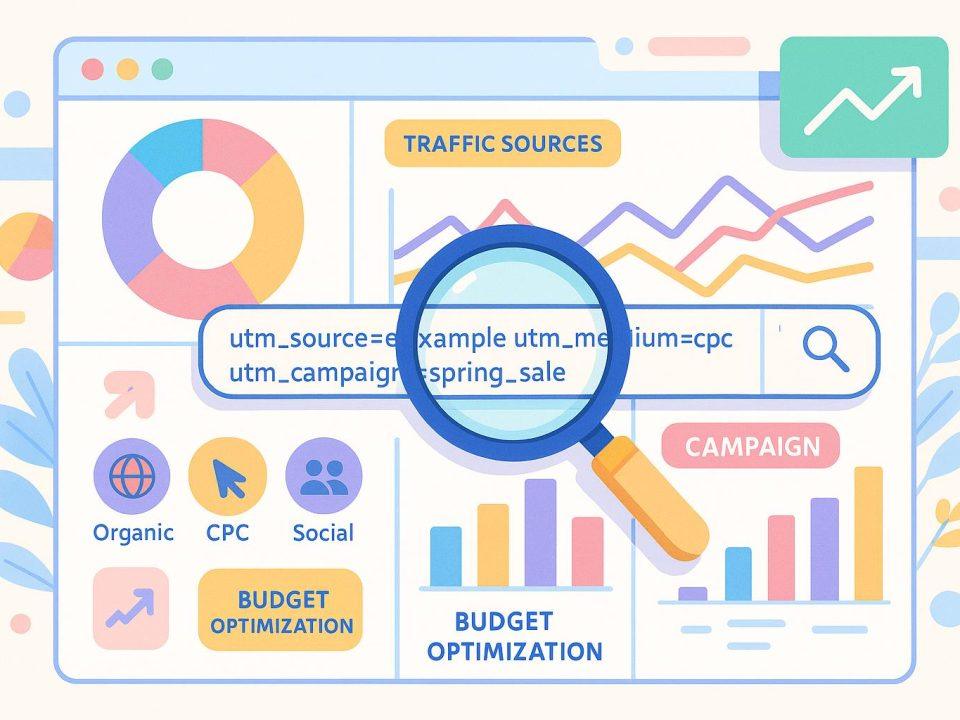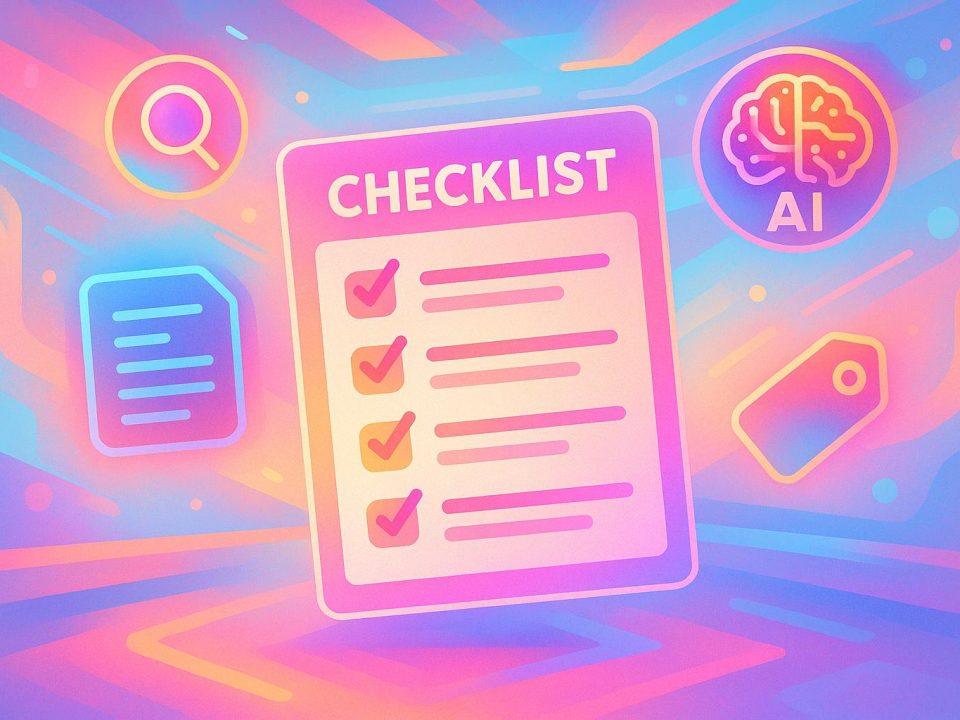SEO content development is critical in today’s digital age. However, it’s not just about writing content. You also have to make sure search engine algorithms pick up on your writing. Your goal is to drive as much traffic to your site as possible to grow your business. Roughly 68% of online experiences begin with a search engine, so if your pages don’t show up in search engine results pages (SERPs), then you are missing out on valuable visitors.
Therefore, you must use the right SEO content development strategies. This includes using SEO best practices like keyword research and internal and external linking. It also includes making sure your content has what Google calls E-E-A-T. Plus, you also have to create high-quality, helpful content. That’s a lot to keep in mind.
Table Of Contents:
- Understanding the Search Landscape for SEO Content Development
- Focusing On the Right Content Strategy
- FAQs About SEO Content Development
- Conclusion
Understanding the Search Landscape for SEO Content Development
It’s said that over 200 Google ranking factors go into what the algorithm ultimately chooses for search results. These factors include things like website age and technical setup, which is why using a multi-pronged approach is critical. Since you’re competing against everyone on the internet, from independent blogs to massive websites like Wikipedia, it can be incredibly difficult to make your website stand out. The truth is, SEO is not what it used to be.
It used to be that you could write a 2,000-word blog post, add the target keyword, and get on the first page of Google. This isn’t the case anymore, especially with search AI changing things up. Google wants to know that your website and your business are legitimate, which is where Google’s concept of E-E-A-T comes in. Google wants content creators and businesses to demonstrate Expertise, Experience, Authoritativeness, and Trustworthiness.
When developing your SEO content development plan, remember that Google is no longer the same as it used to be. Users rely on Google to find the best web pages that satisfy their search intent, so your content needs to reflect that.
Using SEO Tools To Evaluate Target Keywords
Keyword research will help you generate a variety of key terms to use in your content. BuzzSumo and Keyword Tool are great keyword research tools to use to find relevant key phrases.
You should also use a keyword research tool like Ahrefs, SemRush, or the free Google Keyword Planner tool to further analyze these keywords and their variations. These tools will help you understand important metrics like monthly search volume and keyword difficulty.
Tools like Ahrefs and Semrush come with a monthly subscription but are pretty handy. They provide detailed information about keywords for multiple search engines. In addition to providing data about which terms get the most searches each month, you’ll also get insight into which terms are more challenging to rank for. They’ll also provide detailed SEO reports about what’s currently happening on your website, including the number of inbound and outbound links.
Ahrefs’ reports include data about how well a given page ranks, as well as recommendations on how to boost it. The Google Keyword Planner is free, but you can only research Google terms. Some users find that it doesn’t give enough data, especially with regard to which search terms are less challenging.
After you’ve created your report using a free tool or a premium subscription, pay close attention to Google’s filters on its SERPs. Make sure that the terms you’ve come up with actually match people’s searches. You’ll find many keyword variations and long-tail keywords to target.
Understanding The Concept of Search Intent When Writing Your SEO Content
Search intent, in a nutshell, is Google trying to deliver a searcher the information that most directly addresses their needs when they enter something into the search bar. Understanding search intent is a critical aspect of SEO strategy and content development.
You can gain insight into a searcher’s intent by looking at the SERPs themselves. This is why staying aware of how search results pages constantly evolve is critical. When looking at keywords and phrases to incorporate into your SEO content development plan, don’t rely only on search engine optimization tools. Keep in mind that the landscape for Google searches is constantly changing, and Google keeps implementing new search result features.
When looking at SERPs, look closely at Google’s automated filters after entering a head term. You’ll gain valuable insight into the questions a searcher might have about your industry, product, service, or niche. For example, if Google provides a filter like “for kids” after you’ve typed in “games,” this is helpful. Let’s be honest; no self-respecting parent would put “games for kids” into a Google search bar. However, that Google filter can inform you about whether you should focus more on a niche, like offering games for younger demographics.
Also, look at “People Also Ask,” related search features, local pack listings, sponsored ads, “from sources across the web” boxes, featured snippets, and so on. These will give you a much clearer picture of the different elements vying for position at the top of the page. These will tell you about searcher intent. The goal here is to provide the same valuable information to those searching but also consider which SERP feature is ranking better. Then plan your SEO content development strategy around it. Maybe a shorter video would be better to optimize for rather than a 2,000-word article about something.

Prioritizing Expertise and Quality When It Comes to SEO Content Development
What should your focus be when creating high-quality, expert, authoritative, and trustworthy SEO content? Think deeply about the questions you get asked the most. What insights do you have about a topic in your niche, industry, service, or business that other competitors may be lacking or misrepresenting? Are there steps you take to solve a problem or perform a technical action completely unique to your business? You know much more about your service, industry, or niche than just about anyone.
Mersudin Forbes, a Portfolio SEO director and agency advisor with 15 years of experience in SEO, says this: “When thinking about a mobile strategy for SEO, think about how a user seeks to complete their desired transaction and ensure that this matches their expectations on mobile.” This also applies to desktop browsing and how we serve the user overall in our content marketing plan.
Think back to times when your audience has been astounded. Has anyone sent you fan mail thanking you because something you’ve provided transformed their work? Can you use an SEO report to show proof of success and your company’s unique skill set? What about when highlighting how certain strategies got a partner at a startup to the top of Google searches? You may recall how the company was competing against veterans in the industry, yet still managed to get to the top.
The same is true when looking at Jane Friedman, an industry expert in publishing. Her site and her content outrank industry veterans, Reedsy and even Wikipedia. Take her blog post, “How to Find a Literary Agent”, which ranks #1 for the incredibly difficult term “literary agent.” That’s what a smart SEO content development plan is all about.
If you want additional proof about how including a unique perspective on a subject helps, look at what Design Bundles, a site that offers professional fonts and graphics, did in a campaign. They wanted to increase brand awareness and backlinks. The company created unique research around the “most artistic countries in Europe.” This piece ended up being featured in a niche online journal with excellent reputation and domain authority, and the result was an immediate spike in backlinks.

Focusing On the Right Content Strategy
Your company has expertise that sets it apart from competitors. So leverage your expertise, skills, and knowledge when developing your overall content strategy and SEO content development plans. What works best for businesses in today’s SEO climate is inbound marketing. When people and companies use inbound strategies, they automate a huge amount of traffic coming into their website and social channels, such as Facebook, Instagram, Pinterest, LinkedIn, and even YouTube.
Focus on building out high-quality websites and blogs so that people find you instead of using outdated tactics like chasing clients or customers with direct sales and advertising. People are much more receptive to brands that provide value upfront.
Providing Useful and Readable SEO Content
What matters most is this: Can you bring more than just keywords, experience, and expertise to the table when developing SEO content? When building your overall strategy for content creation, you must make sure it is easy for search engines to *find*. In the realm of SEO, that’s called “findability.”
Your content also has to be something people want to read, click through to, share, comment on, and so on. HubSpot has a ton of research that demonstrates this. For instance, HubSpot reports that companies that regularly create blog posts generate as much as 350% more traffic. Research has also shown that close to 82% of businesses have active content marketing strategies that help them attract leads and build sustainable practices.
HubSpot’s research makes one thing crystal clear: Creating good content and optimizing that content using strategies for search engines should be top of mind when thinking about a website. Another study showed that people read short sentences rather than longer ones. Since close to 70% of both B2B and B2C marketers are now employing these practices, you want to think carefully about the structure of your content. Here is a quick breakdown:
| Use shorter paragraphs. | Instead of using huge blocks of text, break things up to keep your pages attractive. Look at how the editors of legacy news providers like the New York Times, the Wall Street Journal, and USA Today structure content on their websites and imitate that strategy. |
| Use headers to organize content. | Headers are easy signals that tell search algorithms about what content on your page is about and which topics matter the most. Use headers (like H2, H3, H4) strategically, incorporate your primary keyword phrase into them (without overstuffing or being unnatural about it), and add relevant keywords to those headings. |
| Include outbound and inbound links in content. | Inbound (or internal) links point to high-authority pages within your site or other pages related to your SEO content development and the primary topic that a specific page covers. An example of a quality inbound link is a page that offers services and provides an in-depth description. You’d want to link to it from another page that briefly summarizes the service itself and then uses “Learn more about our Services” for the anchor text. That way, it serves the same intent. Outbound links point to high-authority sources like research studies or sites you’ve referenced to build trust in your claims. There is no “magic number” for how many internal or external links you should use in a page. A good strategy is to use about one for every 100 words, but only when it makes sense to do so. |
| Don’t forget to optimize images. | When you incorporate images into your blog posts and web pages, keep things at 880 x 550 px or even lower, like 640 x 360. There is some controversy about size, though some SEO experts suggest using much larger dimensions like 1920 x 1080. However, others believe this bloats the code and impacts site loading. Your best practice here is to experiment with what looks best and most clearly for the image you are including. Be sure to include image names (like best-strategies-seo-content-development-3, for example) and a short descriptive caption (like Strategies for SEO) and relevant, keyword-rich ALT text. |
 Don’t Be Afraid of Content Decay
Don’t Be Afraid of Content Decay
An ongoing strategy you also want to think about when enacting your SEO content development strategy is content decay. Ahrefs’ reports and a review of Semrush analytics have revealed the following. In some cases, a company’s pages rank well, especially after spending tons of time optimizing. However, after about a year, some pages show a severe drop in their overall performance and positions in the Google SERPs.
What can be done about this? To begin, revisit your top-performing SEO content regularly, using Google’s analytics data, as well as Semrush’s ranking reports, or Ahrefs. Find pages that show less traffic each month. A good place to begin with revitalizing older content is your product or service pages. Take note of your competitors and if there’s anything you can learn about what *they* are doing. Are there any SERP features that may be attracting visitors or leads instead of pushing them to the high-quality pages you already have online? You want to ensure the pages offer value to consumers who visit them.
Next, start a quarterly content review. Use keyword tools to check which relevant phrases or terms are gaining search popularity or whether Google suggests them as filters when you’re perusing search results. SEO tools such as Screaming Frog and seoClarity help pinpoint website structure problems. For example, Screaming Frog and SeoClarity let you review broken or “orphan” links that are getting no search engine traffic and also let you audit pages that are no longer functioning. Make sure that your URL reflects your target keyword for that particular piece and that it is structured logically using categories and headers. Check whether internal and external links still link to the right destinations, update photos and ALT text for images, and so on.
To top things off, think about refreshing around 25% of the text. Include a brand-new and optimized introduction to entice a click-through to the page from the SERPs, and create a fresh, new meta description that incorporates your target keyword so Google understands what that page is all about. In other words, be a guide and helper for both your audience *and* for the algorithm by providing an overall framework.
FAQs About SEO Content Development
What is SEO in content?
SEO in content stands for Search Engine Optimization in content. Basically, it’s how to format your pages and text for better visibility in search engine results. This includes using relevant search terms that have an acceptable amount of traffic volume, organizing text using headers, adding internal links to your most important pages, and adding external links to credible sources. All of this ensures a good user experience for your target audience.
What is SEO and Development?
This term refers to both search engine optimization and web development. Essentially, both elements should work together. The way you code your pages will determine how smoothly and swiftly Google crawls, indexes, and evaluates your site. This impacts the effectiveness of using good search engine optimization tactics.
How to Develop an SEO Content Strategy
The first step for SEO content development is to research relevant key terms. Determine your most important or most requested services. Then take those keywords, put them into a search tool like Semrush or Ahrefs, or the free Google keyword planner, and get suggestions for terms that have sufficient volume and also difficulty for you to rank for. Avoid using competitive, very common “head terms.” Then begin mapping out your content strategy and which pages would perform better: blog, article, video, and so on.
What are the four stages of SEO?
Four stages for optimizing your content using search engine strategies are (1) research, (2) creation, (3) amplification, and (4) monitoring and maintenance.
Conclusion
As more companies understand that incorporating effective SEO content development techniques helps drive valuable business growth, and traffic, the SERP results are becoming even more crowded and competitive.
That means that every tactic you incorporate into your overall content plan has to be meticulously and thoughtfully crafted. This is because Google constantly watches how brands and content creators game the system. Take, for instance, when Google introduced its E-A-T principle in 2014 and then mobile site speeds in 2018. Semrush, which conducts a wide variety of market research, looked at the content of its top-ranking pages, found relevancy to be a top factor, and has confirmed how these quality issues contribute to the value Google is searching for. You also have to make sure you’re adhering to Google’s Webmaster Guidelines.
Content marketers would be wise to understand that while a well-optimized blog post or product page will certainly draw visitors and potential customers, at the end of the day, you are trying to build something much more critical to ensure business longevity. You’re building an experience for your website visitor, who could become a subscriber, follower, buyer, fan, or customer. Make sure that every facet of your SEO content development plan is built with expertise, quality, and service to your audience.








